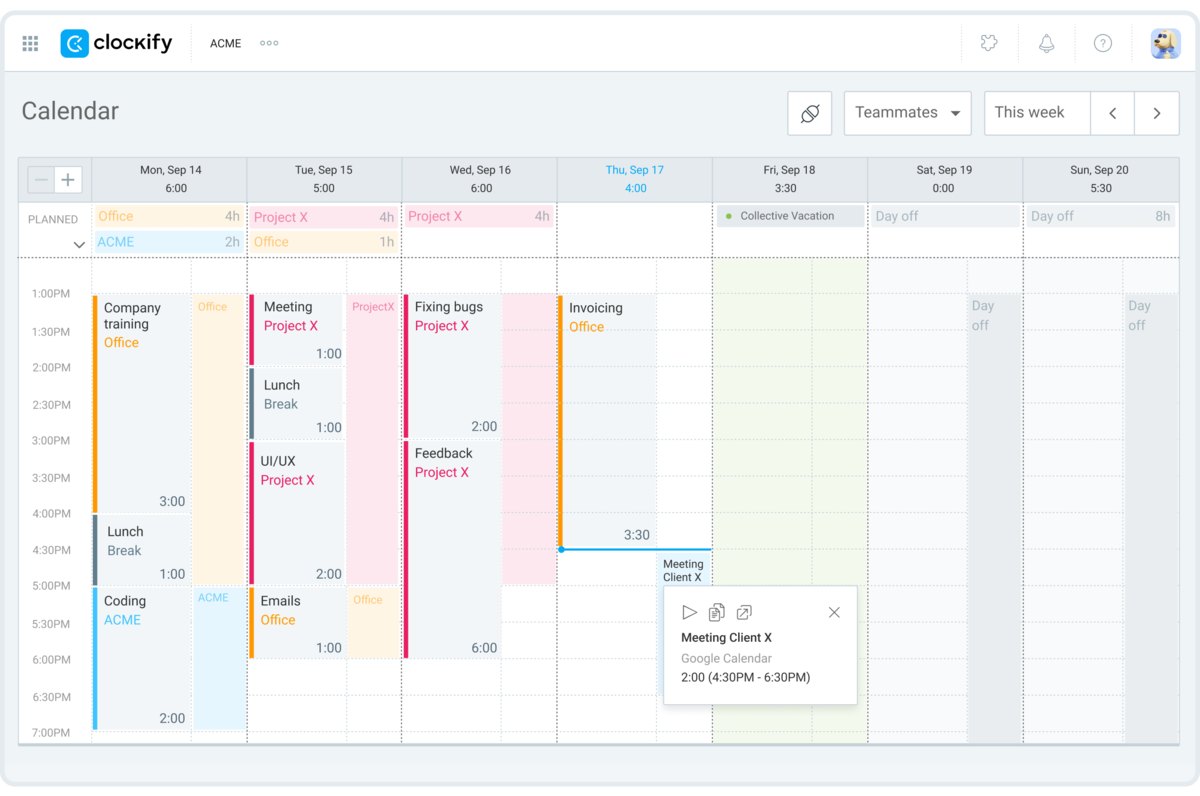This Launch Strategist Pulls off a 4-Day Workweek With Clockify
“We use Clockify to see where our time goes and what we can do to solve any problems.”
– Alex Beadon

Launch strategist Alex Beadon runs Together We Launch — a 6-month program that teaches course creators to achieve a profitable launch. She also manages her own expanding team and maintains a healthy work-life balance.
How does Alex fit all that into a 4-day workweek?
Not easily — with one less workday, she constantly felt the pressure to do more. Also, it wasn’t always clear what her team was working on, and it was hurting efficiency:
“Before we started tracking our time, we had no visibility of where our time was going. But how can you be efficient if you have no visibility?”
However, everything changed when Alex started using Clockify to track and manage work time. Find out how in our tell-all interview.
How Clockify helped Alex Beadon and her team
According to Alex, Clockify was a game-changer in staying productive with a 4-day workweek:
Clockify helped Alex focus more on how her team spends their time:

“We use Clockify to see where our time is going and how to solve any problems. It’s just so beneficial.”

Benefit #1: More transparency
With Clockify’s reporting system, Alex easily sees what everyone is working on at all times:

“I really love the reports. To be able to see all the numbers and everything color-coded… You can see them and say: ‘Okay, this week we spent 21,8% of our time on content creation.’ That’s really helpful to us as a team.”

Apart from precision, our reports offer several customization options:
- Filters — narrow down data by category (e.g., by project, user, or date range),
- Time rounding — round time up, down, or to the nearest X minutes, and
- Formats — download reports in the desired format (Excel, PDF, or CSV).
✉️ If you’re a Clockify user (or also use Pumble and Plaky, within the CAKE.com Bundle) and you’d like to have your own customer story featured on our blogs, reach out to us at pr@cake.com!
Benefit #2: More project clarity
In Clockify, each task you track belongs to a project. This simple hierarchy helps Alex see the time she spends on each task over a year:

“For example, I have a project called ‘Development, Collaboration, and Press’ and a special task called ‘Interviews’ underneath that. So, at the end of the year, I can check how much time I spent on interviews.”
You can also track project progress via:
- Project status — check the total tracked time and budget vs. remaining estimates, and
- Project forecasting — compare tracked vs. estimated time and budget on a simple chart.
💡 Clockify Pro Tip
Stop budget overruns and project delays. Learn how to forecast project outcomes accurately here:
Benefit #3: More efficient scheduling
With Clockify’s calendar view, Alex had a better grasp of everyone’s daily routines:

“A lot of times, I would work early in the morning, work later in the afternoon, and have a big break in the middle. But just having visibility around that is helpful to understanding how you work.”

This makes scheduling tasks to fit everyone much easier, especially since Alex’s team works across different time zones.
Besides providing a visual workflow, the calendar also allows you to:
- Create and edit your time blocks,
- Open and alter employee calendars, and
- Integrate it with Google Calendar or Outlook.
Work more efficiently with Clockify
With Clockify, Alex was able to do more with less time and give her team a 4-day workweek — without overworking anyone or burning out in the process.
Her case shows how Clockify by CAKE.com helps you:
- Track performance with precision,
- Get comprehensive time tracking info, and
- Reduce wasted time.